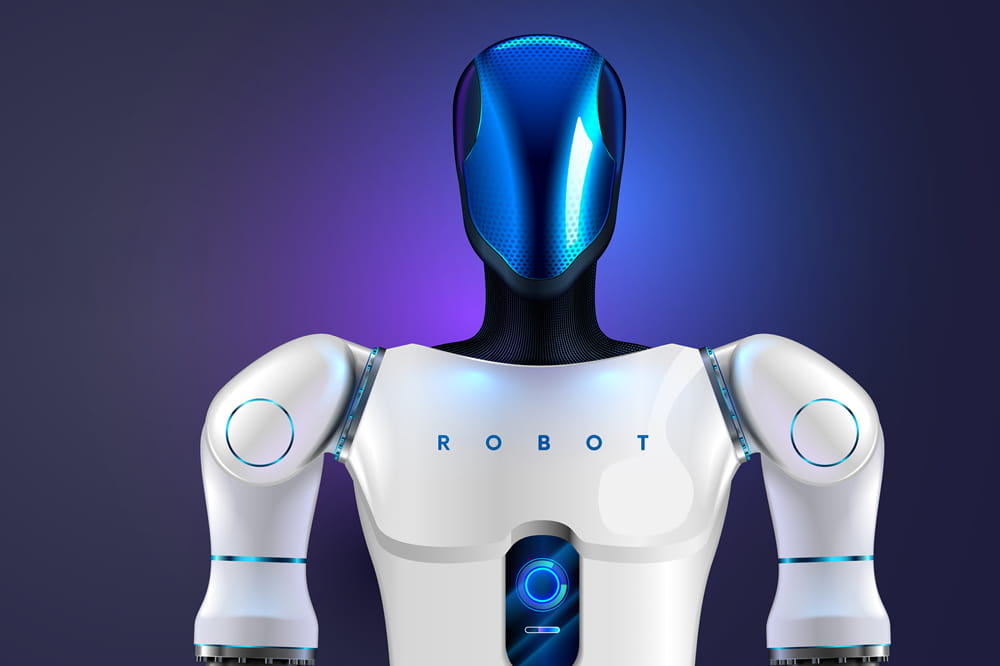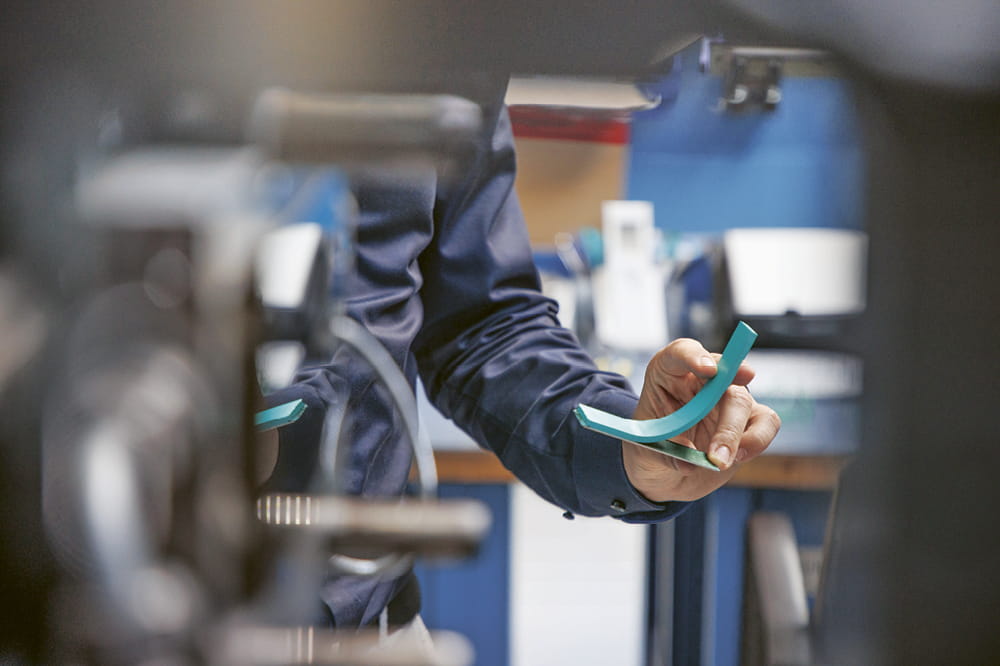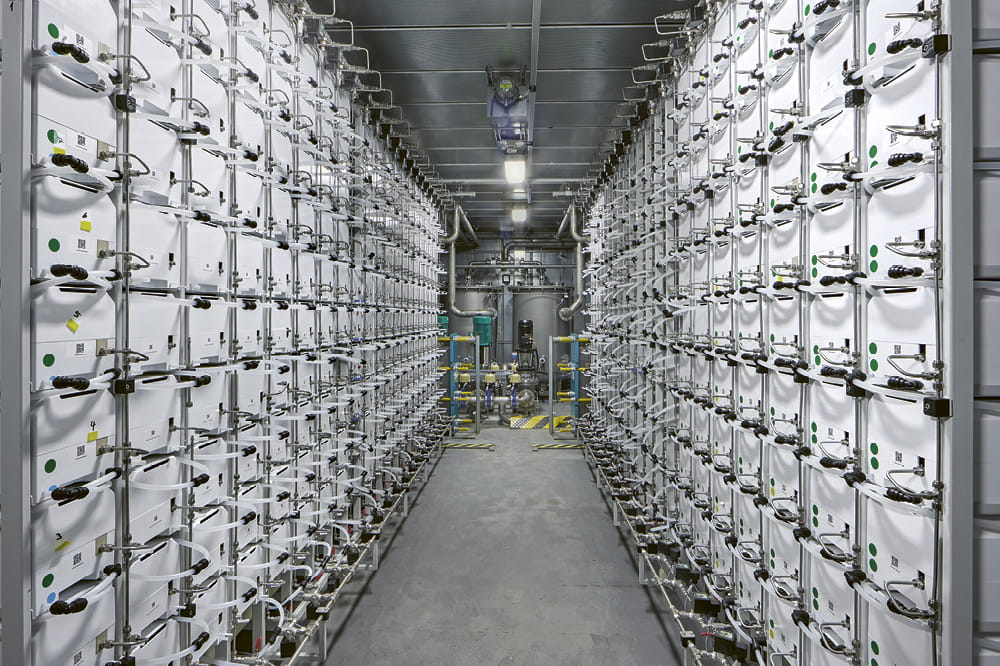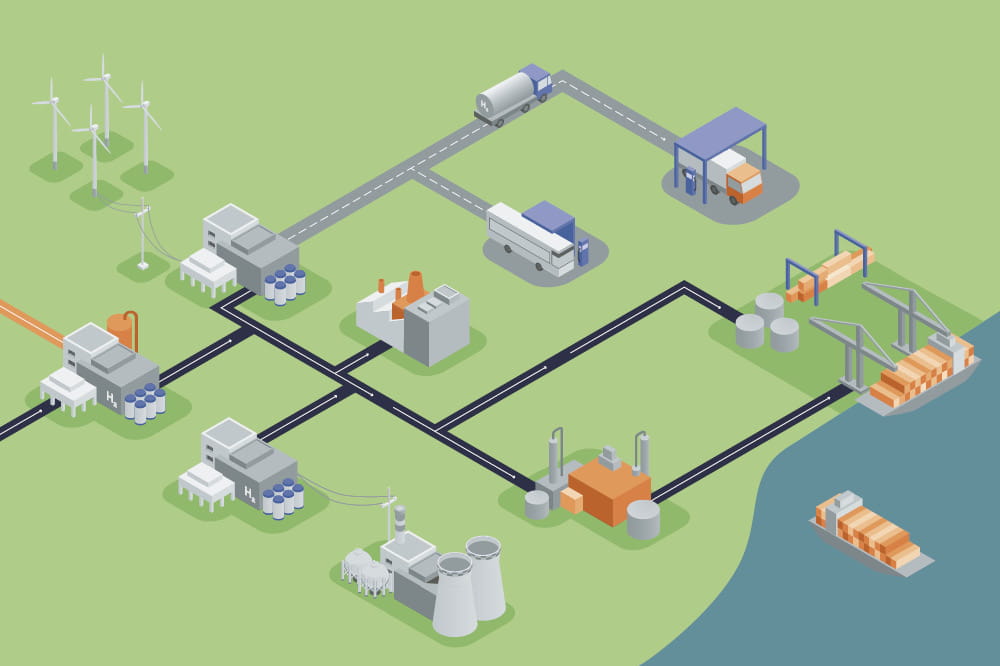Obtain news and background information about sealing technology, get in touch with innovative products – subscribe to the free e-mail newsletter.

Have Fun while Economizing
A playful approach can be an effective and entertaining way to save energy – taking on the challenge of reducing fuel consumption as you drive, for example. It can work in companies, too.
Work is not always fun. But it’s easier to reach your goal if your attitude is more laid back. The digital world, in particular, makes this possible across a broad range of activities. For example, minigames can make learning a foreign language easier. Or a smartwatch can award you a virtual medal when you achieve a goal in your favorite sport.
Sophisticated: Gearing cars for energy savings. The representations are sometimes very elaborate. © iStock/Wirestock
“The concept is known as ‘gamification’: Playful elements in a non-game scenario increase motivation,” explains Madlen Günther, a research associate at the Cognitive and Engineering Psychology Research Group at the Chemnitz University of Technology in Germany. “Gamification came out of the advertising and entertainment fields to create long-term connections with customers. Today, it can be found in nearly every aspect of life.” The group has dealt with gamification in several projects. One of them explored ways of promoting energy-efficient driving with electric cars as part of a carsharing program.
Companies are using gaming elements to promote employee commitment, among other things. They are also used to encourage staff to achieve climate goals. Why is it worth contemplating gamification in this area? “Because it can bring about changes in behavior that can be sustained,” Günther said. The psychologist zeroes in on the main lever: “The feedback provides the most important stimulus – the response triggered by the behavior or success. A number of factors turned out to be less important. They included comparisons with other participants, perhaps based on rankings, along with awards, virtual rewards and real financial incentives.” Prof, Josef F. Krems, head of the research group, adds: “The thing to remember is that this is not a game. The context is serious. Individual game elements – but not a complete series of them – are employed.”
Optimized Energy Consumption
Companies qualify as a serious context. They are facing major challenges related to energy consumption. “The issue is already extremely important in decision-making when considering the purchases of new machines or installations. Energy use, of course, can be represented numerically. But we wanted to go a step further,” says Hans Kloos, a member of Freudenberg Sealing Technologies’ sustainability team. He focuses on Energy Auditing and Investments together with four colleagues. “As of this year, a ‘smiley’ system has been supplementing our investment planning tool. When an employee applies for the purchase of a new machine, he enters the technical data into a digital form – and sees at a glance how it affects energy consumption.” If a sad, red smiley face looks back at him, the energy consumption is higher than it has been with the current equipment. But if the new machine improves productivity, a green face smiles back: That means the investment would reduce relative energy consumption in kilograms of CO2 in relation to revenue.
“Gamification functions in a serious environment. You have to choose and design the elements appropriately,” Günther explains. “Other factors need to be taken into account, as well.” For example, employees need time to become familiar with the system. And transparency is important: What happened? Why is it important? The gaming elements also have to be tailored to the target audience, the cultural sphere and the right age. Gaming approaches find much greater acceptance in Asia. You can take them much further there than in the United States or Europe. And the young tend to be more open to gamification than their elders.
Gamification in daily life: It already has wide-ranging uses – including apps for smartwatches. © Shutterstock/SFIO CRACHO
Playing Energy Manager
Siemens Energy has made gaming elements part of an energy landscape simulation. Among other things, the energy technology company produces equipment for power plants and energy transmission systems – and thus the energy transition. For instance, the simulation uses animation to show a city, an industrial area, a port and traffic routes. Employees and visitors are the target audience. “The energy landscape makes the energy transition and all its challenges comprehensible. It turns you into an energy manager. In a fun way, you can test how CO2 emissions and grid stability change when wind energy or photovoltaics replace coal-burning or nuclear power plants,” says Project Manager Fabian Jung.
The energy landscape can be viewed on a four by two-and-a-half meter (thirteen-by-eight foot) LED wall and is controlled with a touch table. “You immerse yourself in the action in a virtual space. If an unstable electric grid is on the horizon, it lights up red. If the stabilization succeeds, it signals rewards,” Jung said. There was a deliberate decision to use a highly simplified representation and largely avoid specific numerical values. “The CO2 reductions are not accurately presented down to one or two percentage points. The overall picture is what is important – and what levers are available for decarbonization.” A zoom function, on a wind turbine, for example, shows the technology in detail.
Effective Stimuli
Companies usually use graphic representations of operating figures and derive measures from them. For example, Freudenberg Sealing Technologies works with the energy monitoring system Econ Solutions at many of its locations. “Consumption peaks are shown in red and can be recognized at a glance. The operator takes countermeasures, so consumption is evenly spread out over the course of the day,” explains Karl Stein, Freudenberg’s sustainability team lead for factory standards and sustainable technology alternatives. “Who knows? Perhaps visualization is the prelude to incorporating other game elements to spur actions in the future.”
“From our use of smileys in the investment release process, we know how effective these elements can be. On the sustainability team, we continually consider other uses for gamification,” agrees Lea Harmening, who handles sustainability stakeholder coordination for the team. “Yet, we are aware that a typical work environment has different boundaries than private applications have.”
“The stimulus has to be well thought-out. For example, if the playful aspect is too enticing, the serious objective can be lost,” Krems admits. “There can be no undesirable side effects either. Consider driving: If the distraction from gamification to reduce energy consumption is too great, this could cause an accident.” Apart from the health consequences, the cost-benefit ratio would be all wrong and no energy would be saved.
This article originally appeared in ESSENTIAL, Freudenberg Sealing Technologies’ corporate magazine that covers trends, industries and new ideas. To read more stories like this, click here.
More Stories About Sustainability

Join Us!
Experience Freudenberg Sealing Technologies, its products and service offerings in text and videos, network with colleagues and stakeholders, and make valuable business contacts.
Connect on LinkedIn! open_in_new











